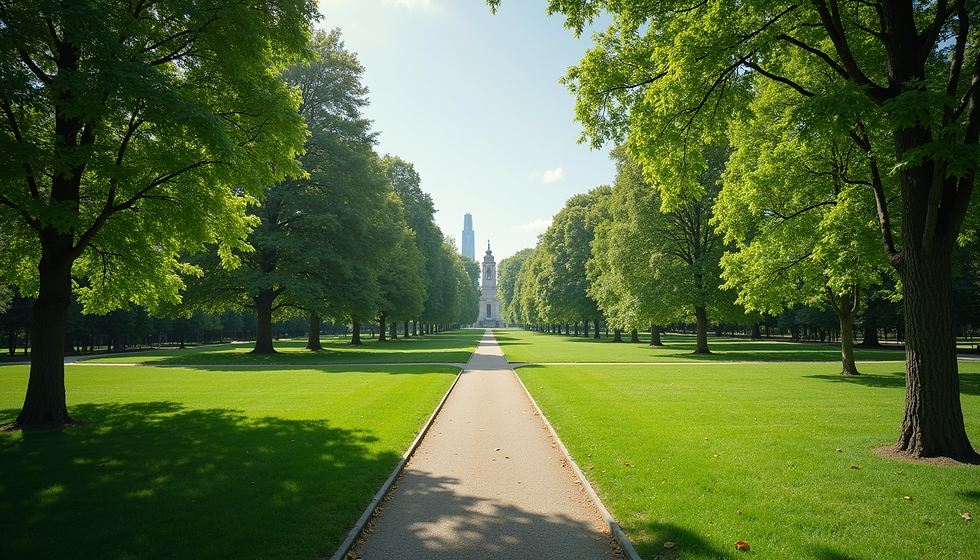Exploring the Origins and Evolution of Independence Day Celebrations
- BoldCreations ByTJ
- Jul 4
- 3 min read
Bold Creations by TJ 7/4/2025
Independence Day is a powerful symbol of liberty and pride for Americans, celebrated each year on July 4th. This date marks the adoption of the Declaration of Independence in 1776, a critical milestone in American history. This post explores how Independence Day celebrations began, evolved, and became an integral part of American culture today, offering insights into the holiday's transformation over time.
The Birth of Independence Day
The story of Independence Day begins on July 4, 1776, when the Continental Congress declared the thirteen colonies free from British rule. Thomas Jefferson penned the Declaration of Independence, outlining the colonies' grievances against King George III and emphasizing the concept of individual rights. Jefferson's declaration sparked a desire for freedom in the hearts of many, igniting a movement that would change the course of history.
The first official celebration took place in 1777, just a year after the declaration. Cities and towns organized festivities that included fireworks, heartfelt speeches, and public readings of the Declaration. In fact, Philadelphia hosted a lavish event with fireworks that drew crowds of around 10,000 people, a significant turnout for that era.
Early Celebrations
As the years passed, July 4th celebrations flourished across the American colonies. By focusing on fireworks to symbolize joy and freedom, communities united through shared festivities. In many places, people came together for parades, food, and entertainment, building a sense of camaraderie.
During the 1800s, celebrations expanded further. Family reunions became more common as people used the occasion to reflect on their hard-won freedom and honor those who fought for it. For instance, towns such as Bristol, Rhode Island, and Quincy, Massachusetts, developed formal celebrations featuring organized parades, singing, and speeches. By the mid-19th century, such communal events strengthened the ties between citizens and reinforced their identity as Americans.
The 19th Century and the Expansion of Celebrations
With the nation’s growth, so did Independence Day’s importance. The 19th century transformed the holiday into a symbol of national pride. Former slaves and abolitionists began viewing July 4th as a day to reflect on freedom and the ongoing quest for civil rights.
In 1870, Congress officially declared July 4th a national holiday. Celebrations across the country became grander, showcasing elaborate fireworks shows, parades with colorful floats, and community picnics. Town gatherings were attended by thousands, emphasizing unity and shared American values. Reports from the period noted that nearly half of the nation’s population participated in Independence Day festivities.
Modern-Day Independence Day Traditions
Today, Independence Day is synonymous with vibrant fireworks displays, backyard barbecues, and family gatherings. Millions of Americans participate in activities like parades, concerts, and playing games in local parks. Fireworks shows, which can cost cities anywhere from $10,000 to well over $100,000, light up the skies, showcasing brilliant colors and breathtaking patterns.
In recent years, many communities have shifted focus towards inclusivity and representation. Celebrations now acknowledge the rich tapestry of American history, often highlighting the contributions of various cultural groups. For instance, festivals may include traditional dances, food from different cultures, and educational booths on historical figures beyond the mainstream narrative.

Beyond festive activities, Independence Day serves as a time to reflect on the principles of the Declaration of Independence. Many Americans engage in discussions about liberty, equality, and justice, contemplating how these ideals apply in today’s society. This blend of celebration and reflection helps maintain the day's significance as a national holiday.
The Role of Fireworks in Celebrating Independence Day
Fireworks have long been central to Independence Day celebrations, dating back to the first events in the late 1700s. The lights and sounds evoke the revolutionary spirit that inspired the nation's founding. For many, fireworks symbolize not only celebration but also excitement and communal pride.
Today, cities across the country spend significant budgets on fireworks displays that draw crowds from miles around. However, rising concerns about safety, air quality, and animal welfare have led to a push for alternative celebrations. Laser light shows and drone displays are becoming more popular, providing exciting options that still resonate with the holiday spirit.

Embracing the Spirit of Independence Day
Independence Day has transitioned from small local gatherings in the 18th century to a national celebration embraced by diverse communities. This day unites people as they celebrate freedom, reflect on national values, and honor the sacrifices made for liberty.
As each July 4th approaches, Americans are encouraged to remember both the joyous celebration of independence and the ongoing commitment to ensuring liberty and justice for all citizens. Whether watching fireworks light up the sky or sharing a meal with family and friends, Independence Day continues to embody the essence of unity, pride, and reflection on the values that define America.








Commentaires